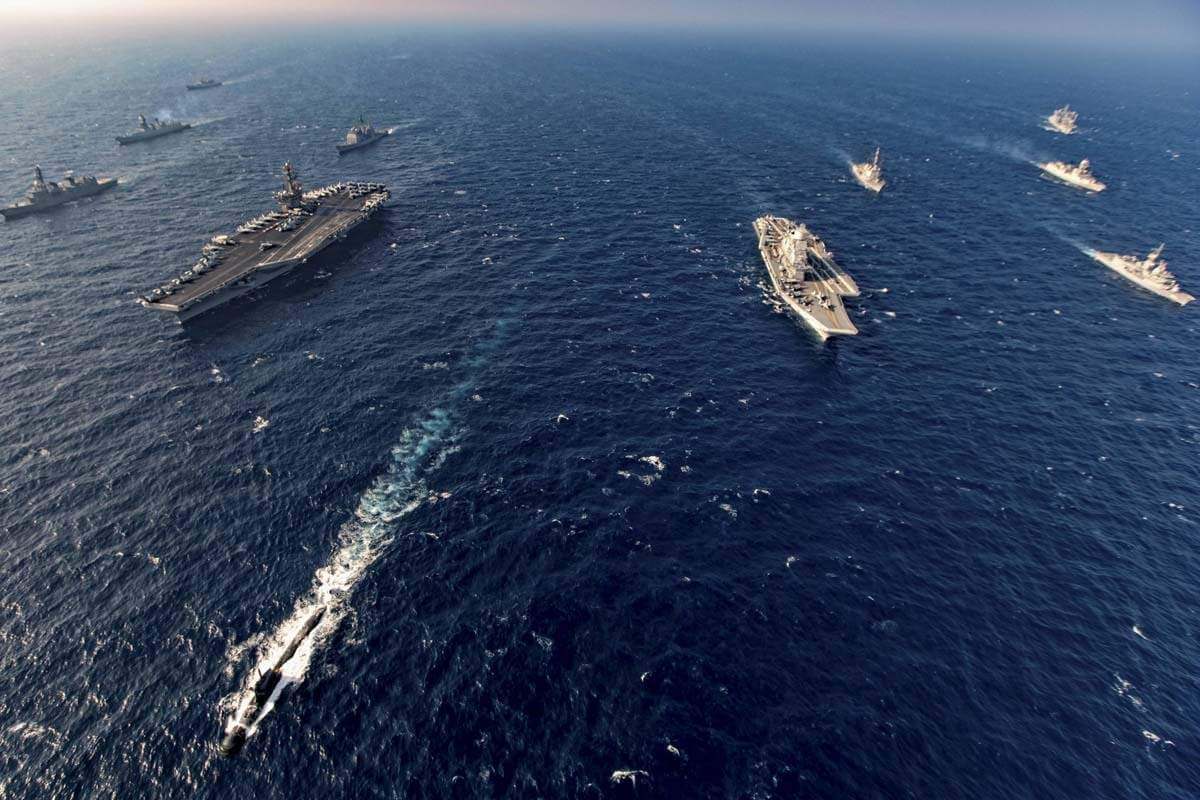On Tuesday, Quadrilateral Security Dialogue members India, Australia, Japan, and the United States (US) began the second phase of the Malabar exercises in the Bay of Bengal.
The three-day exercises see the participation of the nuclear-powered American aircraft carrier Carl Vinson. In addition, the US deployed Ticonderoga-class guided-missile cruiser USS Lake Champlain and Arleigh Burke-class guided-missile destroyer USS Stockdale. The Japanese Maritime Self-Defense Force deployed the helicopter carrier JS Kaga and Murasame-class destroyers JS Murasame, while the Royal Australian Navy deployed HMAS Ballarat and HMAS Sirius. Likewise, the Indian Navy deployed INS Ranvijay and INS Satpura, Indian frontline warships
According to a statement by the Indian Navy, the second phase will also host several complex drills involving frontline warships and other assets of the allies’ naval forces. The drills aim to bolster interoperability, synergy, and coordination amongst the four countries.
The first phase of the exercises was conducted from August 26-29 off the coast of Guam. It saw the participation of destroyers, frigates, corvettes, submarines, helicopters, long-range maritime patrol aircraft, and elite special forces.
The second phase began on the same day that Chief of US naval operations Admiral Michael Gilday reached India for a five-day visit. He met with Indian Navy Chief Admiral Karambir Singh and discussed the bolstering of bilateral maritime security and defence ties. He also met with several high-ranking Indian military officials.
Following the meeting, he said that the Malabar exercises could be expanded to include other like-minded nations in the future. He further asserted that India and the US would work together to enhance interoperability in high-end operations. He claimed that this would “build a partnership” fit to counter “today and tomorrow’s challenges.”
The Malabar exercises were first instituted in 1992 and originally only involved the Indian and American naval forces. In 2015, Japan was made a permanent member of the practice. Australia first participated alongside India, the US, Japan, and Singapore as an “observer” in 2007. Since then, Australia had been pushing for inclusion into the alliance. This is the second Malabar exercise that sees the participation of Australia, which was invited to participate by India last year.
These joint military exercises comes in the midst of escalating tensions with China for all nations involved in the drill. China, which has asserted its maritime dominance in the Indo-Pacific region at large, has always been suspicious of the Malabar exercises and views these exercises as a counter to its desired hegemony in the high seas. China is currently involved in territorial maritime disputes with Japan, Vietnam, Malaysia, Brunei, Indonesia, and the Philippines. In addition, it has become increasingly close to Pakistan and has engaged in aggressive posturing against India in the Indo-Pacific.
India, Japan, US, Australia Kickstart Malabar Exercise in Bay of Bengal
Through the Malabar exercises, the members of the Quad alliance—India, Australia, Japan, and the US—seek to enhance interoperability, synergy, and coordination in maritime security.
October 14, 2021

SOURCE: ECONOMIC TIMES
